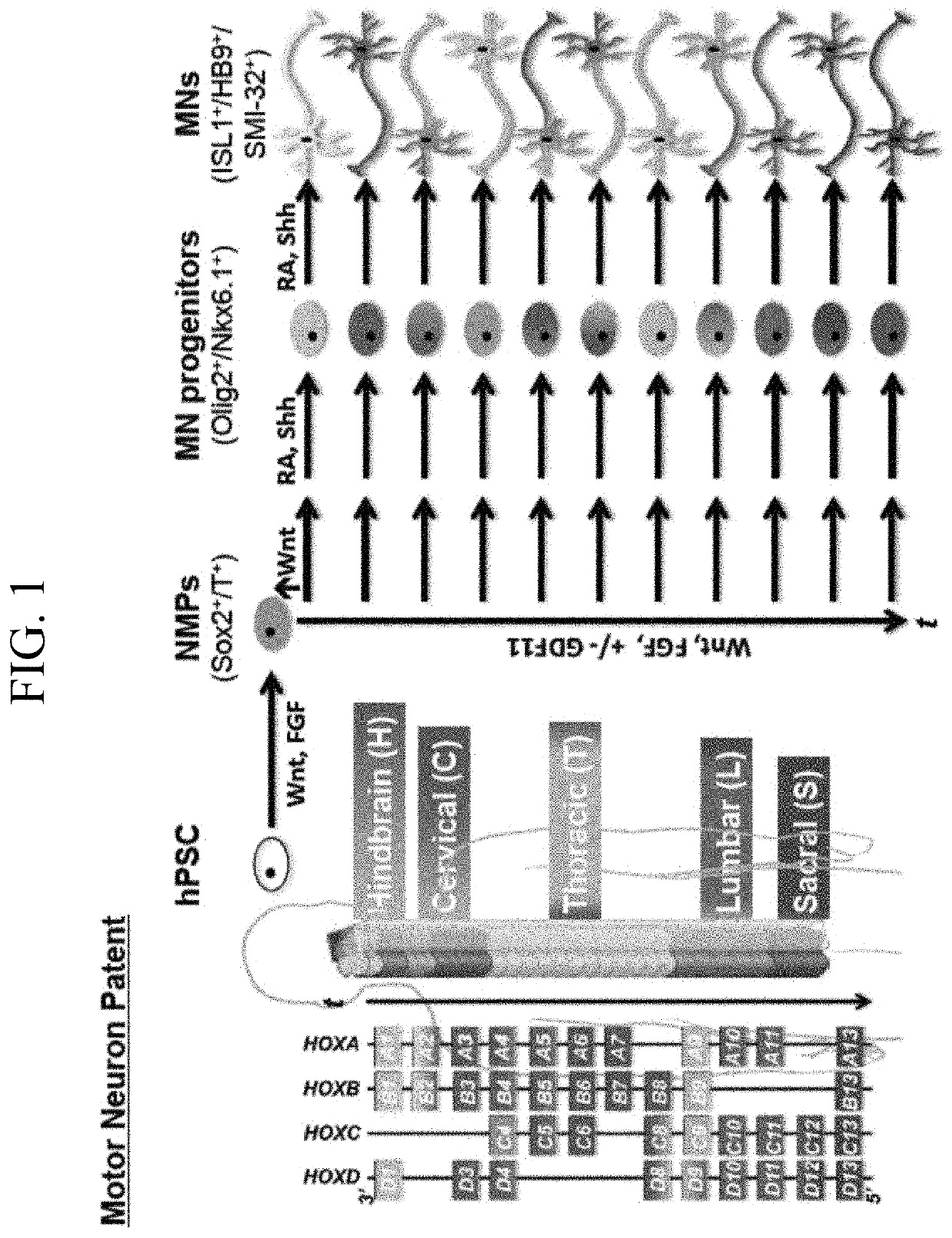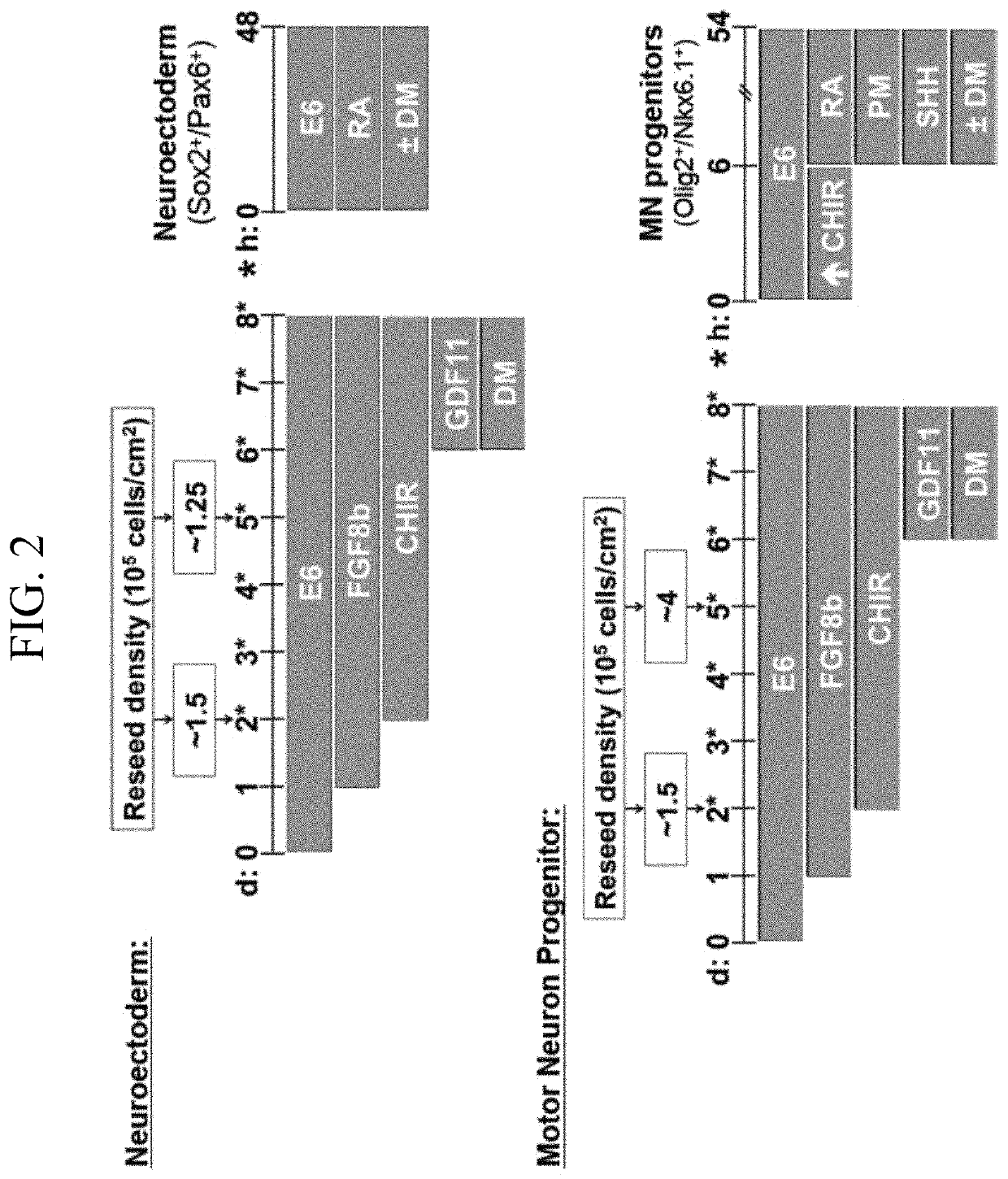Methods for efficient derivation of human motor neurons from diverse spinal regions
a technology of motor neurons and spinal cord, which is applied in the direction of biochemistry apparatus and processes, cell culture active agents, and embryonic cells, etc., can solve the problems of limited progress in effectively controlling hpsc specification to various segments of hindbrain and spinal cord
- Summary
- Abstract
- Description
- Claims
- Application Information
AI Technical Summary
Benefits of technology
Problems solved by technology
Method used
Image
Examples
example 1
enin Regulates Ventral Transcription Factor NKX6.1 Expression During hPSC Motor Neuron Differentiation
[0083]In the ventral neural tube, SHH signaling generates OLIG2+ motor neuron progenitors that subsequently mature into post-mitotic ISL1+ and / or HB9+ motor neurons. To probe the role of Wnt / β-catenin signaling during this process in vitro, we utilized the H9 ishcat2 hESC line, which harbors a doxycycline-inducible shRNA against CTNNB1. Lian et al. previously demonstrated efficient β-catenin knockdown in the H9 ischcat2 line after 3 days of doxycycline treatment (Robust cardiomyocyte differentiation from human pluripotent stem cells via temporal modulation of canonical Wnt signaling. Proc. Natl. Acad. Sci. 109, E1848-E1857 (2012)).
[0084]Similarly, we induced β-catenin knockdown while differentiating the hESCs into motor neurons via E6 neural induction with RA (1 μM), purmorphamine (PM, a small molecule agonist of sonic hedgehog signaling; 100 nM), and neurotrophic factor treatment, ...
example 4
iation to Post-Mitotic Motor Neurons Capable of Forming Neuromuscular Junctions
[0091]Having optimized the efficiency of OLIG2 induction at diverse spinal cord regions, next region-specific post-mitotic motor neurons were generated. Cervical OLIG2+ motor neuron progenitors were en bloc passaged and gradually differentiated to ISL1+ motor neurons over a 14-day period (FIGS. 7A-7B). After 20 total days of differentiation, cervical motor neuron derivation was found to be highly efficient by quantitative immunocytochemistry and flow cytometry (70±3% SMI32+, 68±8% ISL1+, and 66±4% HB9+) (FIG. 7C). The extensive co-labeling of ISL1+ cells with SMI32-reactive non-phosphorylated neurofilament heavy chain is indicative of motor neuron identity. Widespread HB9 / βIII-tubulin motor neuron expression was also observed throughout the cultures (FIG. 7C). Since spinal motor neurons in vivo are observed to be both ISL1+, ISL1+ / HB9+, and HB9+ but are all SMI32 reactive, flow cytometry of the SMI32+ cel...
PUM
| Property | Measurement | Unit |
|---|---|---|
| concentration | aaaaa | aaaaa |
| concentration | aaaaa | aaaaa |
| concentration | aaaaa | aaaaa |
Abstract
Description
Claims
Application Information
 Login to View More
Login to View More - R&D
- Intellectual Property
- Life Sciences
- Materials
- Tech Scout
- Unparalleled Data Quality
- Higher Quality Content
- 60% Fewer Hallucinations
Browse by: Latest US Patents, China's latest patents, Technical Efficacy Thesaurus, Application Domain, Technology Topic, Popular Technical Reports.
© 2025 PatSnap. All rights reserved.Legal|Privacy policy|Modern Slavery Act Transparency Statement|Sitemap|About US| Contact US: help@patsnap.com



